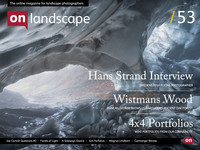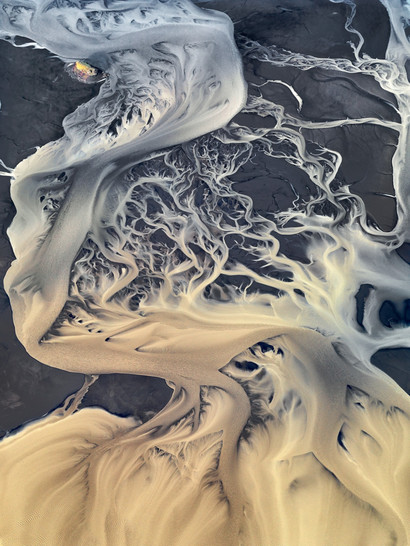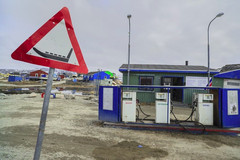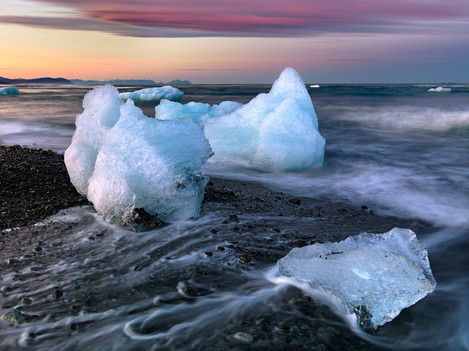Interview

Tim Parkin
Tim Parkin is a British landscape photographer, writer, and editor best known as the co-founder of On Landscape magazine, where he explores the art and practice of photographing the natural world. His work is thoughtful and carefully crafted, often focusing on subtle details and quiet moments in the landscape rather than dramatic vistas. Alongside his photography and writing, he co-founded the Natural Landscape Photography Awards, serves as a judge for other international competitions. Through all these projects, Parkin has become a respected and influential voice in contemporary landscape photography.

Hans Strand
Hans Strand is an internationally recognised photographer who has received numerous awards for his work and published three books. He lives near Stockholm in Sweden.
Hans Strand is one of the most well known European landscape photographers and has travelled extensively around the world capturing images from the deserts of America to the Tasmanian outback. I first saw Hans' work in "The World's Top Photographers" and have followed his work since then, especially his Iceland work which must have a played a part in the countries current place in the landscape photographer zeitgeist. We talked to Hans via Skype - apologies in advance for my poor Scandinavian spelling and pronunciation.
Tim: Welcome to On Landscape, we’re here [via Skype] with Hans Strand in Sweden. Hello Hans
Hans: Hello there
Tim: .... and we’re going to try and get to know you a little bit in this interview so to begin with if you can introduce yourself to our audience and tell us a little bit about how you got into photography and your work
Hans: Yeah, yeah, I’m 57 years so I’m how you say past, what you call it, expiring date is past, anyway I work as a landscape photographer, I’m located in a suburb just south of Stockholm, Sweden, and I’ve been doing this professionally since 1990. Photography came into my life quite late actually, I was 25 years old when I bought my first camera and that happened during a school trip to United States. The class was studying mechanical engineering at the Technical Institute of Stockholm and we did an exam trip to California back in 1981 and I bought my first camera in San Francisco, a Contax RTS with three lenses, and we travelled to Yosemite and there I took my first rolls of film which was quite interesting. It was the holy ground for landscape photography since Ansel Adams made his fantastic images there and yeah and the rest is history I think. In 1990 I made a major change in my life, I stopped being an engineer and started an insecure life being a photographer.
Tim: So what were you doing in engineering before?
Hans: I was in mechanical engineering; machine design
Tim: Yes, is this industrial machines? manufacturing?
Hans: Actually printers for computers, but back then it wasn’t inkjet or laser technology, it was electronic hammers, you know they were hammering on the colour bands
Tim: Yeah, golf ball printers
Hans: Really noisy stuff and they cost a fortune, 23 years ago when I stopped with this, they cost about £4,000 pounds Sterling, it’s crazy, no wonder that they went out of business
Tim: It’s just the ink that costs that much now
Hans: Yeah
Tim: So how did the choice to give that up come about?
Hans: Actually I was more or less forced to do it because I had a back problem, a growing, growing back problem, you know, the last years I was unable to work for several months and I have an injury since I was 14 years old, I tried to make a back flip in a swimming pool and landed with my lower back on the edge of the pool you know and broke the L5 vertebrae
Tim: That sounds very familiar, I have the same, I have L4-S1 fused
Hans: Ah, you have that, ok you’re in the same club then
Tim: and it’s the reason I got into photography also
Hans: Is that right? That’s amazing. And yeah of course you’re more you’re not bound to sit in front of a desk all day but you didn’t used to do that but today now with all this processing procedure, so of course you’re back to the office work again, you know which I really don’t like ....
Tim: It’s not the best for a back is it?
Hans: No its not, I also have problems carrying too much weight on my back, I get numb in my legs you know
Tim: So obviously when [the injury] flared up, you were unable to work so you started doing photography as a hobby or .... ?
Hans: I had photography as a hobby for 9 years
Tim: So how did you go about starting to turn that into a career?
Hans: Well gradually I had built it up as a business while I was working as an engineer so it wasn’t a huge step you know. I had quite a few clients already and it was easier back then, I must say much easier becoming a photographer in 1990 than it is today you know, I frequently get asked by young students 'what do you recommend me to do?', you know, and I ways say get a half time job at least, I mean it is almost impossible to make a living straight away from photography school you know
Tim: So at that point in time it was stock and commissions?
Hans: Yes I was actually travelling all over the world shooting landscapes and submitting these images to stock agencies and made my living from that, and it was a good way of making your living because if you took a few days off you still had somebody working for you.
Tim: Yes. I presume most professional photographers at the time would have an administrator who would help edit the images and submit them, etc.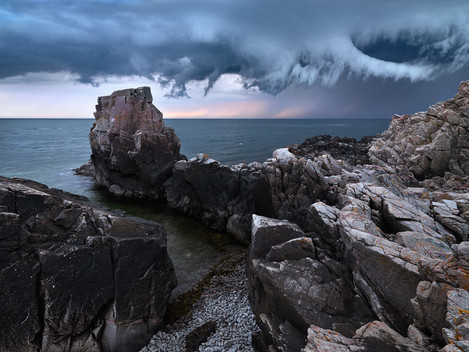 Hans: Yeah, it was a very, very nice of way making a living but today that has become, I mean for me my stock sales have gone down with 95%, so it’s just nothing, I earn nothing more or less from agencies
Hans: Yeah, it was a very, very nice of way making a living but today that has become, I mean for me my stock sales have gone down with 95%, so it’s just nothing, I earn nothing more or less from agencies
Tim: When did that start happening for you?
Hans: It started dramatically in 2008 with the collapse of the world economy. It was like a singularity in November 2008, it went from good to disastrous just right away, you know. No clients were calling, the images sales from the agencies just plunged and it has never recovered since then
Tim: And so, when you were working on stock and commissions were you still using the Contax camera that you had bought?
Hans: No, no that was stolen so, it was stolen from my apartment a year later in 1982 and for the insurance money I bought a Hasselblad camera 500CM with 3 lenses and gradually I bought more lenses, so I was working with a Hasselblad media format during the 1980s and all the time until now. I sold the 6x6 camera just a few years ago for nothing
Tim: Yes, that’s right you can’t use the new Hasselblad backs on the old cameras can you?
Hans: No, you can, but I would say the new lenses are superior to the old ones so that doesn’t make sense
Tim: So you were shooting media format, and I believe you, well you mentioned earlier in a previous conversation about using 10x8 at one point
Hans: Oh yes well I was shooting 6x6 Hasselblad until 1990, I bought a 6x9 Linhof Technikardan, very, very neat camera, fantastic camera all the movements of a large format camera and it was quite compact and the optimum camera for a wild country photographer and I used that for many years on my traveling all over the world, and then maybe in ‘95 or so I bought a 4x5 Linhof Technikardan camera which I also really liked, fantastic camera and I could use the same lenses with the same fitting on them so not a problem at all, and then in 2002, I bought an 8x10 Toyo Field and then when I bought that camera, I thought “Now Hans, you don’t have to buy any more equipment ever in your life, you have everything you need" and I could never have been more wrong could I. Then later in 2003 Canon introduced the first full frame digital 35mm camera and I realised that I had nothing, so I had to buy all the gear, all the computers and hard drives and whatever you need you know, screens, printers
Tim: So at the time you would be taking your transparencies and sending straight them off to [clients]?
Hans: Yeah, yeah, and half of them got lost every time so I’ve lost a lot of original trannies you know which is sad
Tim: Disappointing, yes, this is why people used to take multiple copies I think isn’t it?
Hans: Yeah that’s how it was you know
Tim: Yeah, and moving to the Cannon 5D was it the the first full frame?
Hans: No the first was the Cannon Eos 1DS
Tim: Ah the 1DS, yes
Hans: It was 10.4 megapixels fantastic
Tim: Did you move to that immediately?
Hans: Yeah, everybody thought it was gorgeous but if you look these files today it’s just dreadful, dreadful files, but in 2003 it was gorgeous
Tim: And you made the transition, you were using the 1 series cameras for a while were you?
Hans: Yes, I was using next version of DS Mark II and EOS 5 and I was using Canon until 2007 when I had a chance to borrow a Hasselblad, what it was called HDS239 or something, fantastic names, HaHa
Tim: Yes
Hans: ....and from then on I have used Hasselblad and just recently I have bought a Nikon D800E and I use it with some Zeiss lenses, I am very happy with that equipment as well
Tim: And with the different cameras that you’ve used, you’ve gone from using the 10x8 technical cameras through to using DSLRs – do you find that your photography changes as you use these different devices? Your style of photography ….
Hans: I understand. Both yes and no, actually I think I still follow the tradition of a classic landscape photographer, like shooting with a view camera and I am very how you say meticulous still, I am not spraying the landscape with exposures, I’m really trying as good as possible to find the perfect position for the tripod and I’m very careful making the composition etc. so I work more or less the same way but using new technology has opened up a few more doors, you know, you can do focus stacking which is fantastic, to get gorgeous depth of field, even through a series of verticals like in a forest etc. which was absolutely impossible with a view camera, you have to find the ideal focal plain which you don’t have to find with focus stacking
Tim: So when you’re taking photographs with the Hasselblad, you’re not using a technical camera for that, you’d be using a Hasselblad body and focus stacking to get the depth of field
Hans: Yes I also use it with a HTS adapter with tilt and shift. If you have an ideal object which is leaning away from where you’re standing, you can tilt and find a good tilt plain, you know, but if I have verticals like in the forest I use focus stacking
Tim: You’ve worked in landscape photography, in wild nature photography, who were your inspiration when you started off, were you a fan of any particular photographers or artist?
Hans: I think, like everybody, I was impressed by the work of Ansel Adams. This was in 1981, I was actually buying a lot of photo magazines etc. before I had a camera so I was drooling over the photos by Ansel Adams and then in 1984, I was at this time I was competing in rifle shooting for the Swedish National Team, I was in the Olympics in Los Angeles, and there I found a fantastic book called Nature’s America by David Meunch and that was my bible for many years you know and I thought his photography was more expressive than Ansel Adams, more powerful
Tim: I think his photography really introduced that extreme perspective, the near far compositions that became, became and are still popular to this day
Hans: Yeah sure
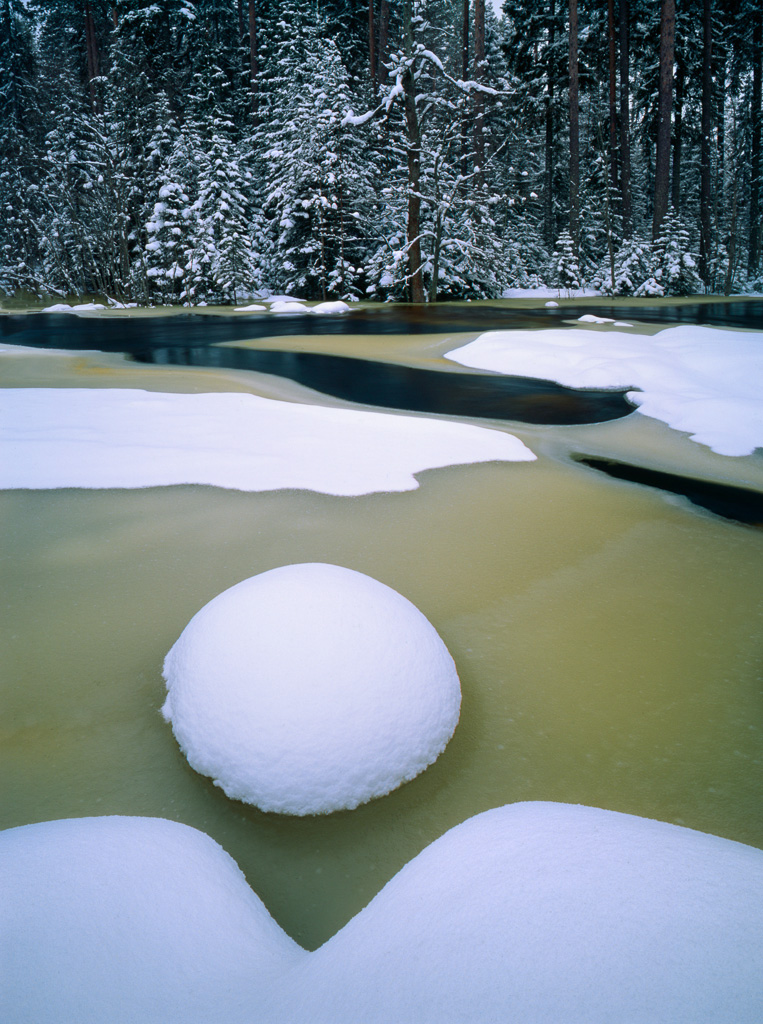 Tim: We featured Mark Adamus in a previous issue and he’s taken that style of composition to another dimension in many ways
Tim: We featured Mark Adamus in a previous issue and he’s taken that style of composition to another dimension in many ways
Hans: Yes, yeah he’s also doing focus stacking [to achieve that]
Tim: Yes, doing things that are almost impossible. I think there was a particular image where there was icicles hanging down
Hans: Yes, I saw that yeah
Tim: At that time was photography mainly a business for you, or was the art first, was it always .... ?
Hans: The first years when I photographed as an amateur it was just passion you know and I was participating in competitions etc. and yeah that was how it was and a lot of black and white, just for the fun of doing black and white
Tim: And how did you find transitioning from that from being a professional photographer, were the creative demands on you quite hard?
Hans: I was very stubborn for many years, not including people to make the pictures sell more, etc. but then gradually I realised that, I mean if I do this, a commercial image and I earn money enough and I can do what I like with the rest and if I do 10% of commercial work it might allow me to do 90% artistic and passionate work you know so that’s how it became you know
Tim: I think there seems to be many photographers who work in that pattern, they fund their art through the business side of photography, so it’s quite a separate art, I know there are a few photographers in America who’ve got strong fine art reputations who actually have 3 day a week jobs as directors of a companies or consultants
Hans: But mentioning America, it’s quite amazing because it’s a major difference between how we see commercial images and non-commercial images, but in America they see everything like art, even if it’s commercial. I went to a summit of this North America Nature Photographers Association (NANPA) in San Diego once and they were educating young photo students how to take pictures and they said “Well you have to leave space on top of the image for text” and Holy Christ you would never teach somebody here to make a picture how do you say not tight enough just to allow text in the picture
Tim: So that was part of the teaching as an art director?
Hans: Yes. Probably they were right if you want to make a living you should do that but from an artistic point of view you should not do that.
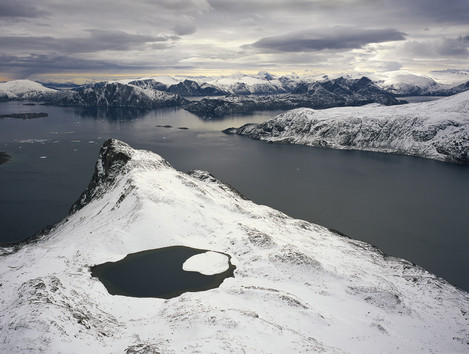 Tim: Mixing the two is a very difficult thing isn’t it? You live in Sweden which is a beautiful country. How is the landscape photography scene over there? We look at photographers in Europe and there are particular countries that seem to have strong photography scenes, landscape photography
Tim: Mixing the two is a very difficult thing isn’t it? You live in Sweden which is a beautiful country. How is the landscape photography scene over there? We look at photographers in Europe and there are particular countries that seem to have strong photography scenes, landscape photography
Hans: We have a big tradition of nature photography, but I think the majority of people working with nature, they are focusing on animals rather than landscapes. They do both, the majority is animal photography and they also kind of cheat shooting a little bit of landscape but not really seriously
Tim: While they’re waiting for the animals to appear
Hans: Yeah, sort of, but there are maybe four, five or six, seven [professional] landscapes photographers here but not much more than that
Tim: You photographed internationally quite often but whereabouts in Sweden do you prefer to visit for photography?
Hans: Mostly up in the mountains and in the north, in Lapland it’s really wonderful and also the opposite in the beech forests down south in the province of Skanör , that’s a gorgeous place to be as well, you know, and some parts of the coastlines, we have something called the High Coast in the north, in the what they call Bothnic Sea, where the biggest land rise in the world since the Ice Age, you know, there is a sea floor which is 285m above sea level today and there is very dramatic coastline there that is one of the favourite places there are few but the most is domesticated more or less so it’s more cultivated landscape
Tim: Yes, yes, so for the rest of the world, whereabouts do you like to visit these days, I mean its Iceland is extremely popular these days but you’ve been [going] there for a long time
Hans: It is, there is no ending of the popularity of Iceland for the right reason, I mean it’s extremely wild and extremely different and a very friendly country to visit and yeah you just drool when you’re there you know
Tim: Yeah, are you travelling as often as you were then?
Hans: I go there every year at least once
Tim: And what, as stock has dwindled, presumably you are approaching photography in terms of education, commissions and print sales primarily, where do you see your photography going now for yourself?
Hans: It’s, slowly, I'm getting more and more prints sold but it’s a very slow market here in Sweden, you need a gallery more or less you know I think that’s the big problem and it’s a lot of investment, a lot of risk taking and I haven’t had the funds to do that and I’ve just started teaching workshops as well, but it’s also quite slow for the moment
Tim: Yes, so print sales, presumably America is still one of the primary locations for buying prints, do you have any idea why America is so different from the rest of the world?
Hans: I think it’s a tradition you know, photography has always been considered as art in America whereas here in Sweden or in Europe, art is more something you know its painted art which is considered being the real art or it could be photography, as well but you should not call yourself a photographer then, you should have an art education and photography is the way you express yourself, but don’t ever call yourself a photographer because then you won’t succeed you know
Tim: Yes, I can understand that
Hans: That’s the mumbo-jumbo
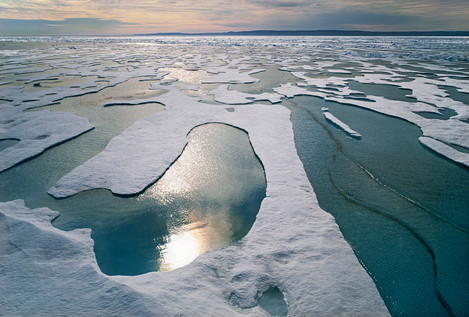 Tim: So in terms of project work you work primarily on the individual image [i.e. vista], but I have seen you doing some aerial photography. As a project, can you tell me more about this aerial photography?
Tim: So in terms of project work you work primarily on the individual image [i.e. vista], but I have seen you doing some aerial photography. As a project, can you tell me more about this aerial photography?
Hans: Yes, the first time I was in Iceland in 1995 I bought a book by a German aerial photographer named Klaus Franke and I was so amazed by his images and first I thought it was a result of infra-red film etc., some kind of manipulation, but 5 years later in 2000, I went there by myself and hired a pilot and an aeroplane and went up in the sky and saw these fantastic colours that were really existing there up and under me and I got the bug sort of. It’s amazing to see this, it’s like sitting over a conveyor belt with different kind of compositions and colours coming towards you it’s gorgeous, gorgeous and some flights you can land 100 great images you know it’s you can never experience this kind of intense of photography from the ground level as from the sky
Tim: Yes, and are you actively guiding the pilot when you are doing this?
Hans: Oh yes, it’s like riding a horse, you have to be very accurate with your directions and it takes a while to learn how to do that, you know, you cannot fly right over the object you see, you have to fly left of it, if you’re flying a Cessna, shooting to the right, you have to pass the object on the left side and then you make a 360 circle over it to it, so it takes a while to develop a good skill how to direct the pilot
Tim: So how long do you get up flying if you hire a …
Hans: Maximum 5 hours
Tim: Yes and so I presume that’s quite expensive as well, just because …. ?
Hans: It’s expensive but not at all as expensive as flying with a helicopter, you know I fly Cessna’s and that’s about £200 per hour so it’s of course 5 hours it adds up to quite a lot of money but flying helicopters is eight times more expensive or something like that
Tim: So do you need to have any particular techniques in order to be able to do that, do you just focus infinity and fire away?
Hans: Yeah, I tape my camera on infinity so I don’t move the focus and I jack up the ISO to 200 on my Hasselblad camera and I have a shutter priority which I never use when I shoot from ground level but I set it at 1/800 of a second and then I just shoot you know with one lens, I just use the standard 80mm lens ...
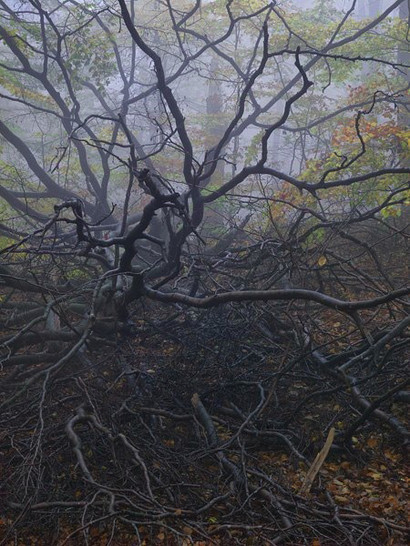 Tim: Yeah, you don’t want to be messing around with changing lenses
Tim: Yeah, you don’t want to be messing around with changing lenses
Hans: ... and you can zoom in and out with the altitude of the aeroplane. Yeah, sometimes I’ve used a wide angle but very seldom I would say 95% of my aerials are shot with the 80
Tim: So can anybody go out and commission an aircraft, are there certain licences that you need?
Hans: Yes, you can rent them at a flight school at Reykjavik
Tim: Yeah, and you’ve flown in other countries or is it primarily Iceland?
Hans: Just in Iceland, a few times in Sweden but, and once in Germany
Tim: And obviously one of your images won the, was it Wildlife Photographer of the Year?
Hans: Yeah in 2000 or 2001, yes 2001 I think it was
Tim: And also this year, you’ve had an aerial picture in 2012
Hans: Yeah, Yeah
Tim: When you are creating pictures there, are you thinking about particular uses for these pictures or are you primarily saying these are pictures I want to take and then choosing them for competitions or purposes afterwards?
Hans: I’m planning on making a book on Iceland that’s a project, but I'm in no hurry, I want to do this good as possible because I think it will be my most, the most important piece of work I’ve done in my life, you know, so I’m not in a hurry but in a few years I will try to find a publisher make the book
Tim: And you’ve had one book already, the, I won’t try and pronounce it the Den Åttonde Dagen
Hans: Yeah it was, it means the 8th day, it was published in 2002 and I’ve done totally four books yeah
Tim: Yeah. So when you say four books, you mean four editions, four prints?
Hans: Four different books
Tim: Oh ok I was looking at the books on the website
Hans: They are the ones that are sold out. The first book I made was in 95 it was called ‘And the Sea never Rests’ it was about the circulation of water, the lifecycle of water, so it was like a journey from the melting glaciers and snow in the mountains to creeks and rivers and lakes and finally out into the ocean so that was the story of it and then I did a book on trees in ‘98, trees from all over the world
Tim: What was that called?
Hans: It was called something “For as long as the forests grow” or something directly translated in Swedish "Så länge skogen växer"
Tim: Yep
Hans: ... and then just this Autumn, I launched a book called "Året Runt" which means “The year round”, the annual circle of seasons in the Swedish landscape,
Tim: Are these available through?
Hans: The latest book is available, yes, "Året Runt"
Tim: How do you find creating books, personally I think creating books the best way of disseminating pictures, its .... ?
Hans: Of course it’s a way of putting to a, what do you call the thing around the book, like a folder, you bind your images inside of, I don’t the English word for that, but it’s a way of summarising a project over a long period of time and it’s a very nice ah. It's also a bit frustrating because very few publishing companies want to do, wants to add varnish, they want to do as cheap as possible for production
Tim: .. Do you get publishers who publish your books or are you thinking about self publishing?
Hans: I have never done self publishing but maybe one day we’ll see. It also involves a lot of you know packaging books and going to the post office etc. I think you should do what you think you’re good at you know and if you can find a good publisher who stands up for your ideas I think it’s the best way of doing it.
Tim: So apart from Iceland, what projects, what projects have you got working, what have you got coming up in the next year?
Hans: Yeah, I’m also writing a book on the Arctic so I’ve been up in the Arctic since 1997, when I first went to Greenland, and in ‘99 I was joining a Swedish icebreaker expedition through the north west passage in Arctic Canada. It was film back then, but still I was shooting a lot, I have a lot of material from these days and it has changed dramatically since back then you know, there were such things as melting ice in the north west passage in Lancaster Sound which is a fantastic, it’s like the theoretical north west passage and the end of it is called, it goes from Davis Strait which is the sea between Baffin Island and Greenland, North of Baffin, you enter the Lancaster Sound, it changes its name from Lancaster Sound to Parry Channel to Melville Sound to McClure Strait. The McClure Strait is the western most, the furthest west you can get in this stretch of water and it had never been navigated before when we came there with a huge Canadian ice breaker and we were the first in history to go through there and that was in 1999 and it was considered being a sensation. Today you can paddle with a canoe there, you know
Tim: Wow, no ice?
Hans: There is no ice in the summer and this melting ice was sensational, it was so gorgeous to stand in the front of the boat, going through this enormous patterns, you know, square miles after square miles of just incredible labyrinths and patterns of melting ice, it was phenomenal. I took 110 rolls of film of that
Hans: So that’s going to be a book some time in the future?
Hans: Yes I continue I’ve been to Svalbard a couple of times, I've been to Greenland again, been shooting in north of the Arctic Circle here in Scandinavia, I’ve been to Iceland which is also, depending on what kind of definition of the arctic you are using, Iceland is also a part of the Arctic or the sub Arctic
Tim: You mentioned that you also got a Nikon D800 recently, how are you getting on with that, what do you think of the camera and the ..... ?
Hans: I think it’s a phenomenal camera. I really, really like, it’s not maybe as user friendly as a Canon, I think there are a few things such as exposure compensation which is a two button operation which I hate, but except from that the technical quality is in a class of its own in 35mm photography. I really, really like that camera and in combination with Carl Zeiss lenses, I think it’s probably invincible.
Tim: So what lenses are you shooting with it?
Hans: 15, 21, 35 f/1.4 and 50 macro and I also have Nikon Zoom 7200 VR2
Tim: Yes, yep, and you’ve got the D800E presumably have you?
Hans: Yeah and I think there is a little bit extra micro structure as I call it if you look at the picture in 100%, it’s more detailed
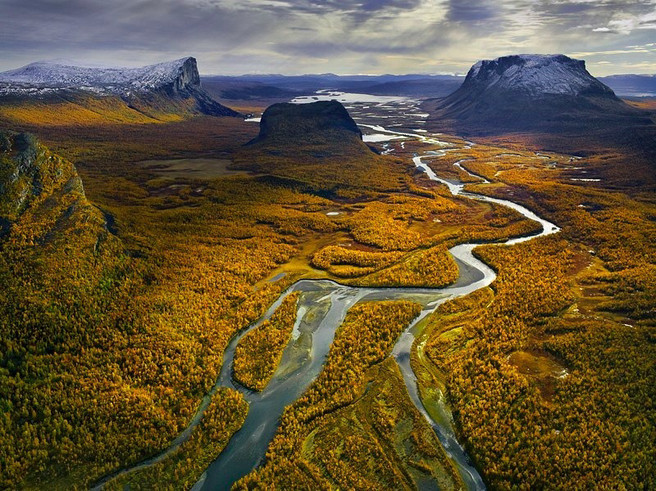 Tim: So for yourself, how big would you print from those files?
Tim: So for yourself, how big would you print from those files?
Hans: Yeah I think it’s almost up there with the medium format but not quite. There is something different which I cannot explain what it is but maybe it has to do with the 16 bit colour depth, something with transitions between colours to it, it seems to be more brilliant the medium format is more brilliant
Tim: So its colour separation is it?
Hans: Yeah something like that, it’s also more, it’s also sharper because of the larger format
Tim: Yes, yeah, but you’re quite happy to print up the Nikon files up to 20x24, 30x40?
Hans: Oh yes
Tim: With regards to printing, do you print your own work?
Hans: I used to do but now I’ve, I had a, I had a 24 inch HP printer but it ceased to work and I threw it away and I haven’t replaced it, and so now I do all my printing on LightJet, it’s a professional lab that do the printing for me. It print both in colour and black and white on baryta paper and the black and whites are amazing and its warm tone baryta, I really like that
Tim: And the colour is that on the Fujiflex?
Hans: Yes
Tim: How do you, given a choice between HP Inkjets, the Epson and LightJet, which do you prefer?
Hans: LightJet is superior, it’s more, it’s has almost 3D, it's a huge difference when you look at the prints side by side you know, you think it cannot be better than an Epson print but if you compare it with a LightJet, it’s a totally different league
The interview is continued in part Two where our readers ask a few questions and we talk about some of Hans' individual images.
[portfolio_slideshow id=14558]

